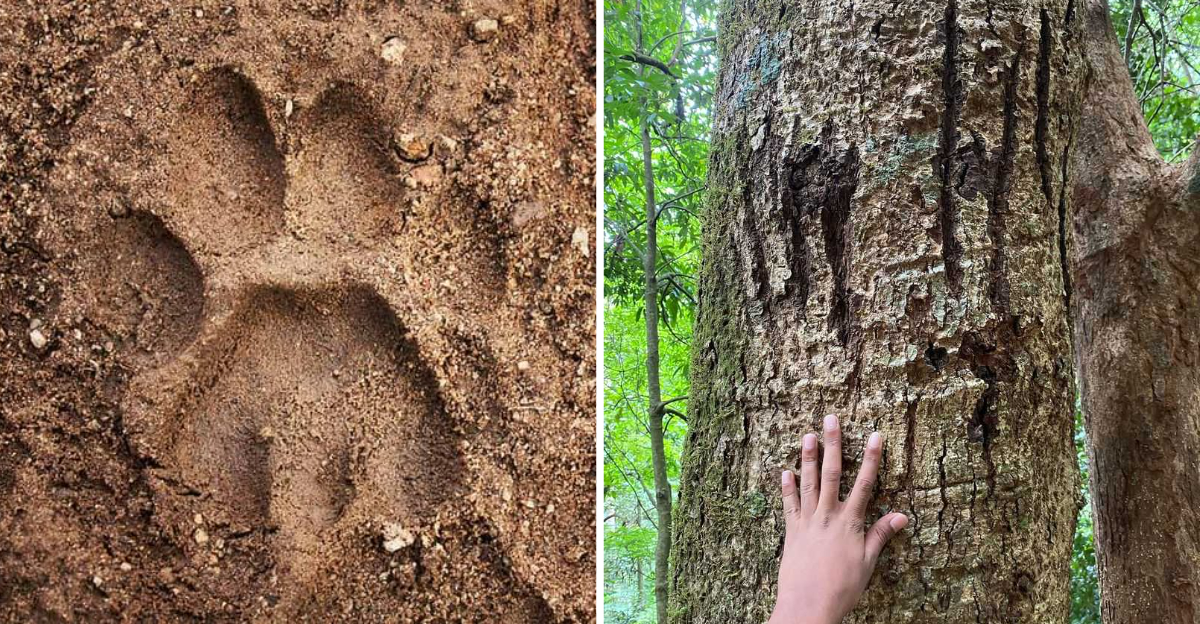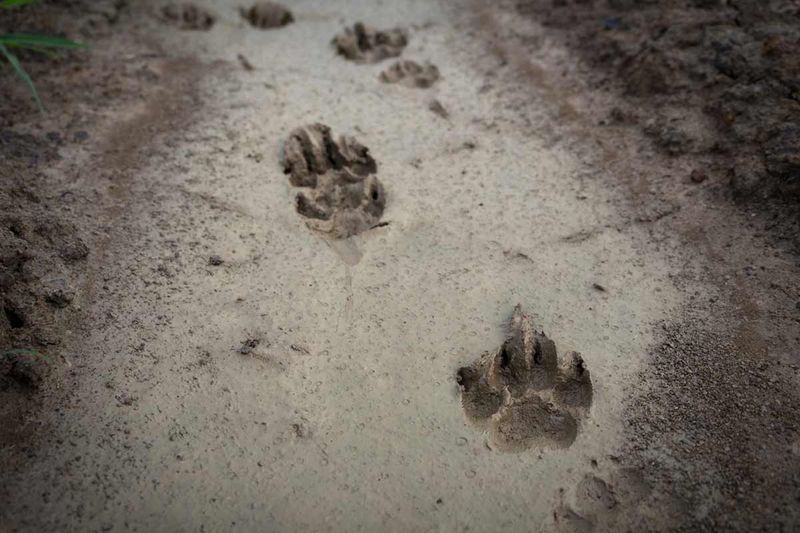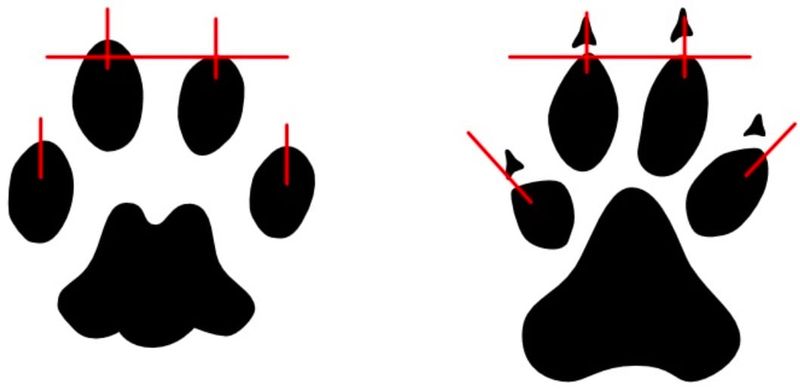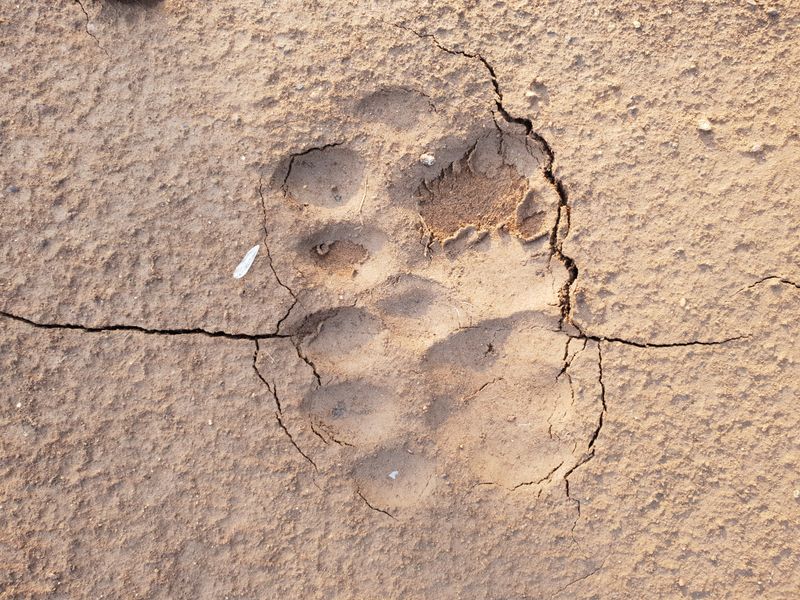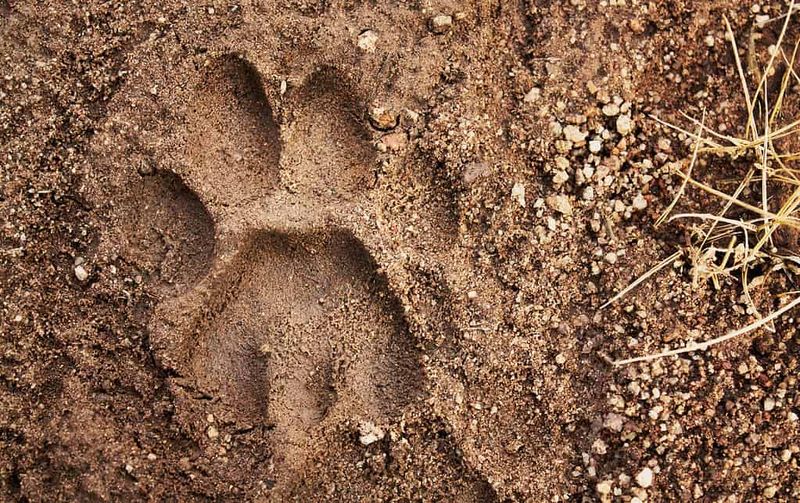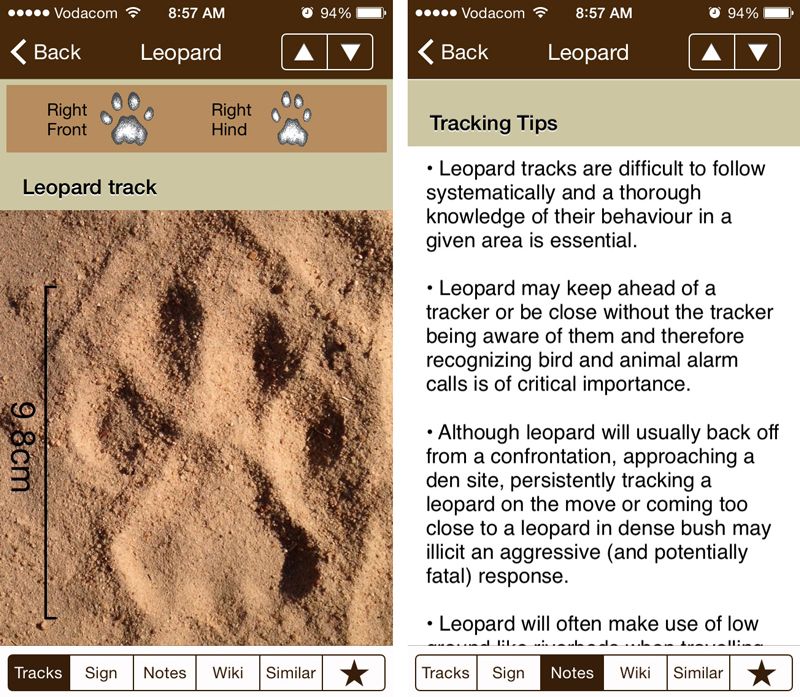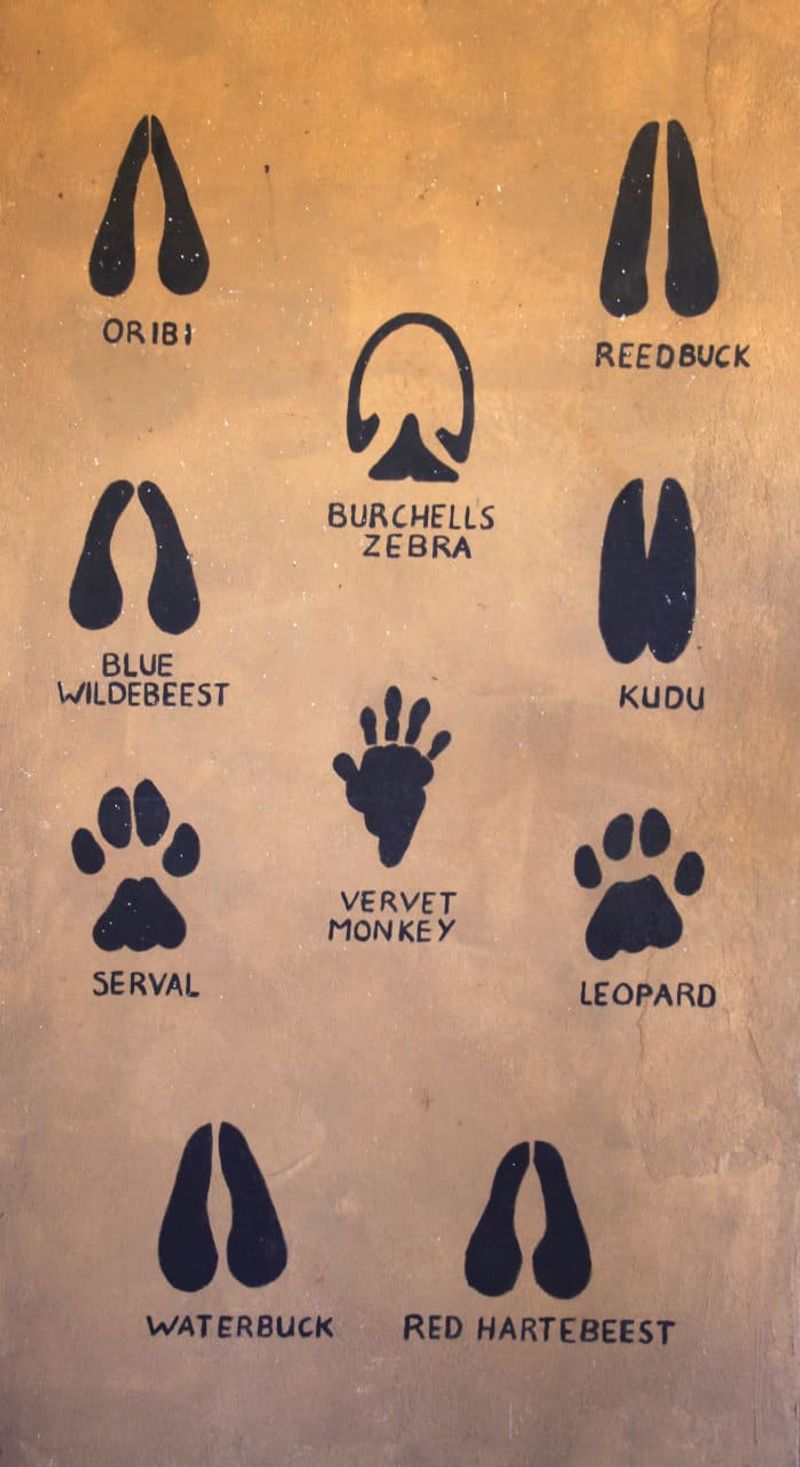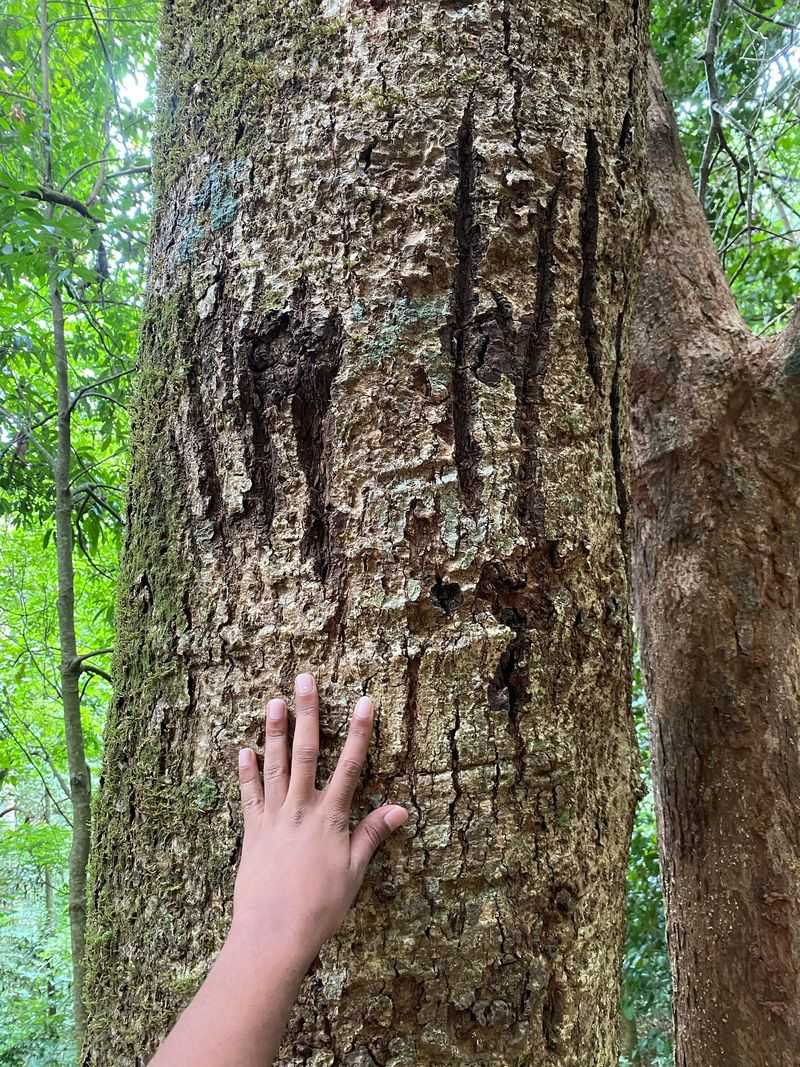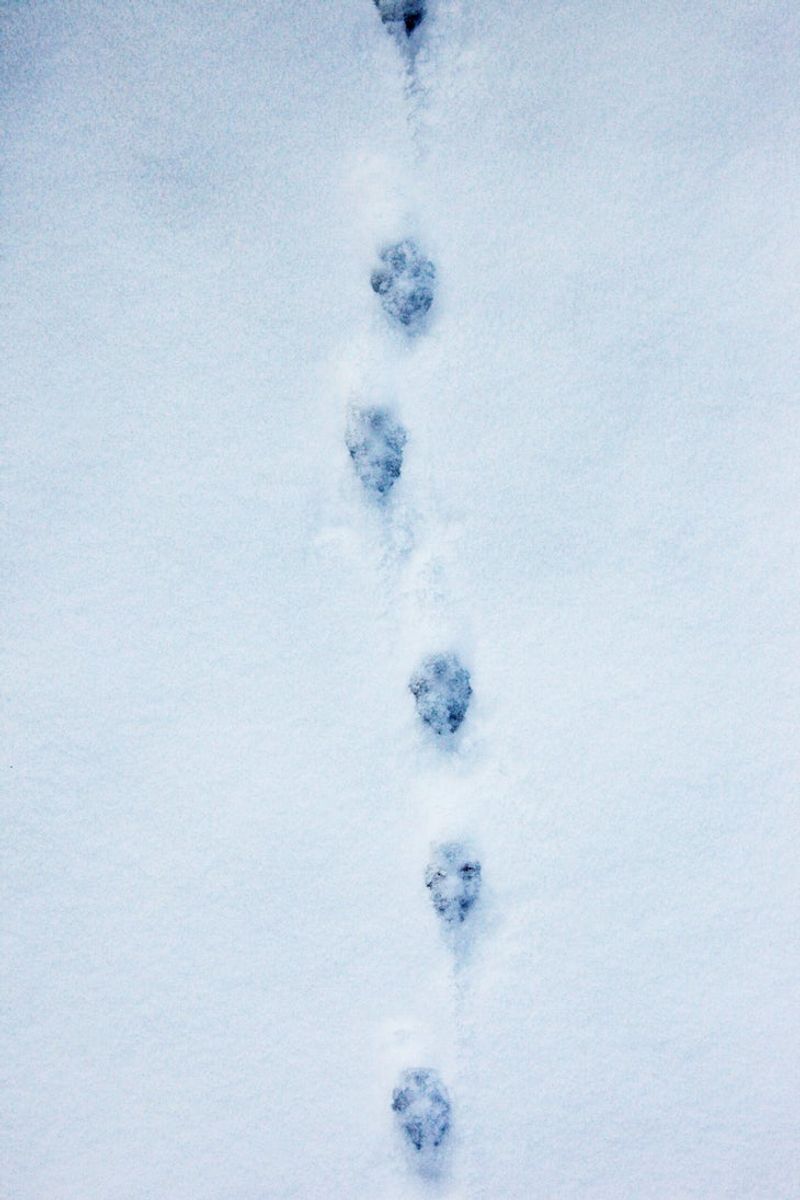📖 Table of Content:
Identifying big cat presence in the wild involves examining tracks and signs they leave behind. Different big cats have unique track characteristics, scat, scrapes, and movement patterns. Learning to recognize these clues can help distinguish whether a lion, leopard, or mountain lion has been in the area. Here are ten distinctive ways to identify which big cat has traversed your path.
1. Size and Shape of Tracks
The size and shape of tracks provide crucial clues about the big cat. For example, mountain lion tracks are distinctively large, ranging from 2.75 to 3.875 inches in length. Their broad, rounded paw prints set them apart from smaller animals. Such tracks are often found in wooded areas where these elusive creatures roam. Observing the size and shape helps determine not only the species but also the age and health of the animal. Keen eyes will notice how the rounded edges contrast with other wildlife footprints.
2. Toe Arrangement
The arrangement of toes in a track can indicate the type of big cat that passed through. Felines typically have four toes neatly arranged in a circular fashion, surrounding a trapezoidal heel pad. This pattern is unique to cats and helps differentiate them from canines. By examining the symmetry and spacing of the toes, trackers can identify whether a lion, leopard, or another big cat has left its mark. Each toe leaves a distinctive print, helping to unravel the mystery of the animal’s identity.
3. Claw Marks Presence
Claw marks in tracks provide insights into the behavior of big cats. While most cats have retractable claws, leaving no marks, exceptions occur when the animal is running or pouncing. A leopard’s track might show faint claw impressions during such moments of action. Observing these details can reveal more about the cat’s recent activity and mood. If claw marks are visible, it could indicate a chase or an alert state. Such clues add layers to understanding the creature’s recent journey.
4. Mountain Lion Identifiers
Mountain lions, also known as cougars, have unique tracks. Their tracks are large, with a three-lobed heel pad and typically no claw marks. The front two toes often appear asymmetrical, with the inner toe positioned slightly forward. This distinctive feature helps distinguish them from other big cats. These tracks often appear in regions where mountain lions are native, such as North American forests and mountains. Recognizing these identifiers aids nature enthusiasts and researchers alike in their tracking endeavors.
5. Leopard Track Features
Leopard tracks are smaller compared to those of lions, with males’ tracks measuring up to 9 cm in length. They exhibit a three-lobed heel pad and four toes, with claw marks seldom visible due to retractable claws. Found across various African terrains, these tracks reveal much about the leopard’s stealthy movement. Observers can tell if the animal was on a casual stroll or engaged in a stealthy hunt. This adds an element of intrigue and respect for the leopard’s adaptable nature.
6. Lion Track Characteristics
Lion tracks are generally larger, especially those of males, whose front paw tracks can reach up to 145 mm in length. They feature a three-lobed heel pad and four toes, with occasional claw marks. These tracks are often found in African savannahs where lions roam freely. The presence of claw marks may indicate a lion in motion or a defensive stance. Studying these tracks unveils not only the lion’s size but its gender and behavior, offering a glimpse into its majestic lifestyle.
7. Scat Examination
Scat examination is a vital clue in identifying big cats. For instance, lion scat is typically large and contains hair and bones, reflecting their carnivorous diet. In contrast, leopard scat is smaller and more segmented. These droppings can be found scattered near feeding sites or along trails. Analyzing scat provides insights into the diet, health, and even the recent meals of the big cat. This forensic-like analysis adds another dimension to understanding the daily life and survival strategies of these predators.
8. Territorial Scrapes and Scratch Marks
Big cats often mark their territory through scrapes and scratch marks. Leopards, for instance, leave visible claw marks on tree trunks as territorial signals. These markings can indicate the presence and size of the animal, as well as its recent passage. Observing the height and freshness of these marks helps determine the species and even the individual cat. Such behaviors highlight their instinctual territoriality and communication methods. It’s a fascinating glimpse into the social dynamics of big cats.
9. Movement Patterns
Movement patterns are reflected in the spacing and alignment of tracks. For example, closely spaced tracks might indicate a stalking behavior, while widely spaced tracks suggest the animal is moving swiftly. Tracking these patterns in various terrains such as snow or mud reveals the big cat’s intent and pace. This evidence allows trackers to infer if the cat was hunting, exploring, or in transit. It’s a dance of footprints, revealing stories of survival and instinct in the wilderness.
10. Unique Behavioral Clues
Behavioral clues from tracks can reveal the unique stories of a big cat’s encounter with its environment. For instance, finding deer tracks alongside big cat tracks might suggest a recent hunt or pursuit. Observers can deduce whether the cat was successful or still on the prowl. These interactions illustrate the complex and dynamic relationship between predator and prey. Understanding these clues enriches our appreciation for the intricate dance of life in the wild, where each track tells a part of the larger ecological narrative.
